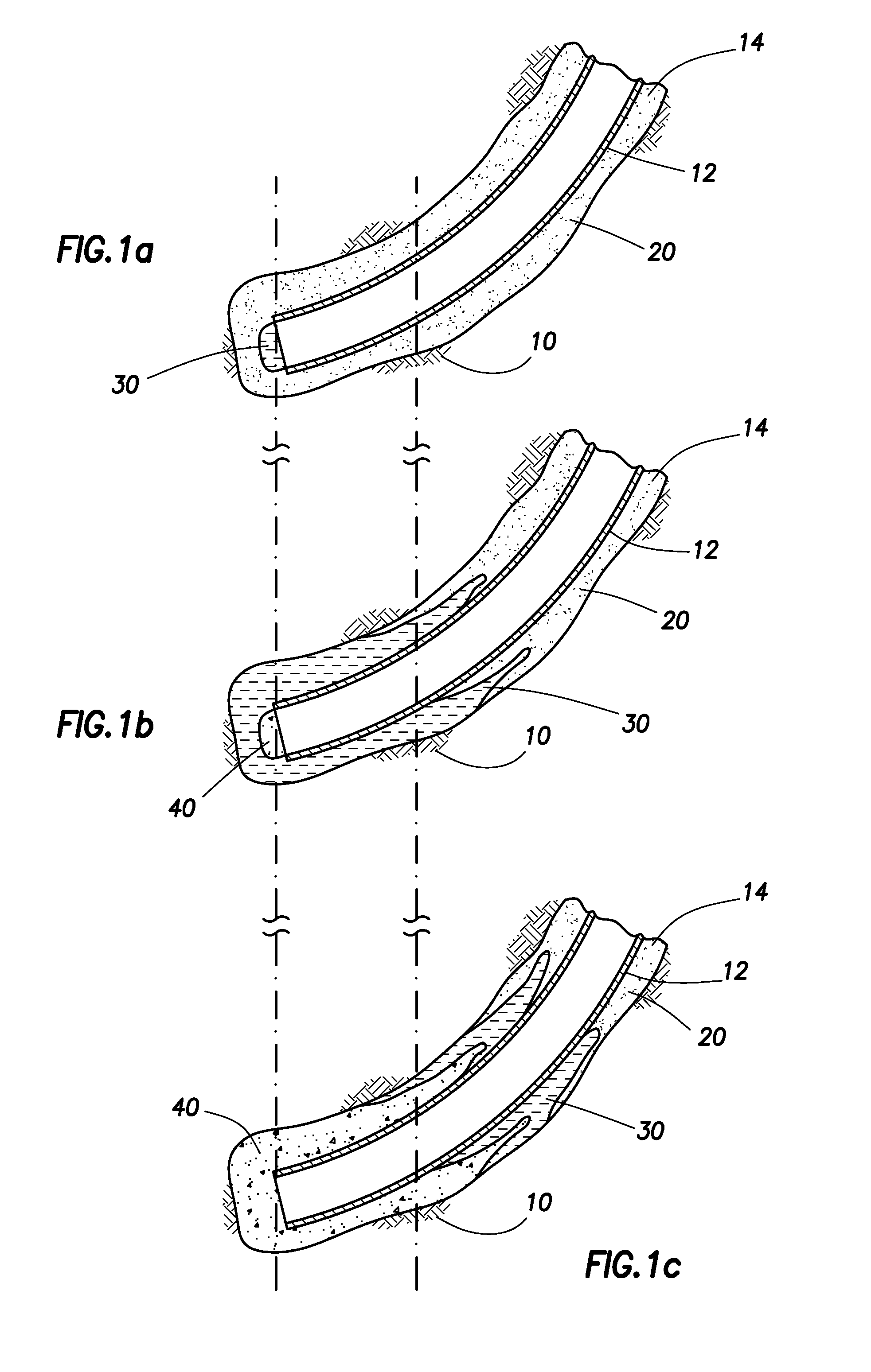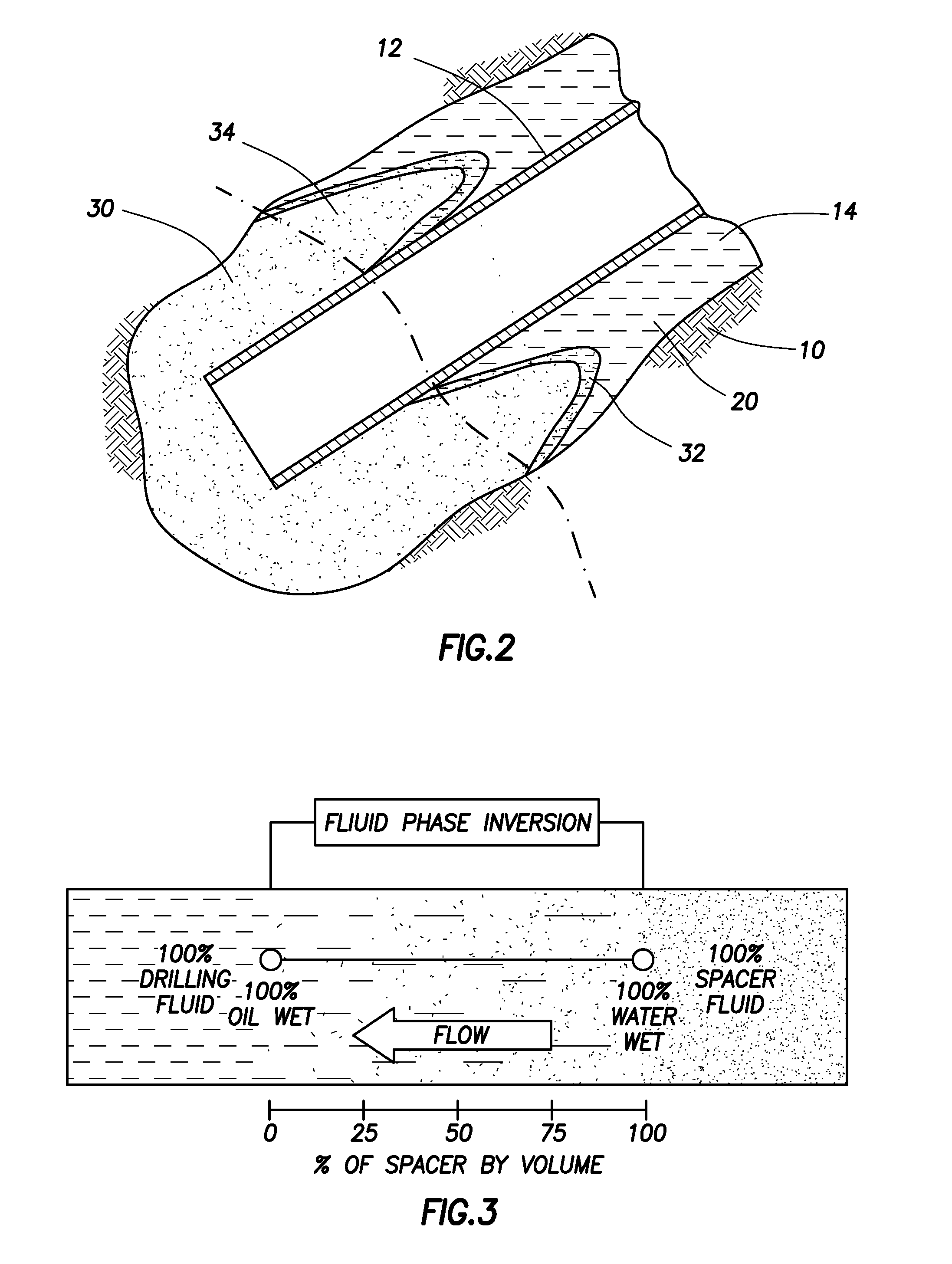Determining surface wetting of rock with changing well fluids
a technology of surface wetting and well fluid, which is applied in the direction of survey, instruments, borehole/well accessories, etc., can solve the problems of unsatisfactory effects, hydraulic cement compositions that do not bond well to oil-wetted surfaces, and proportional decrease in the shear bond strength of the interfa
- Summary
- Abstract
- Description
- Claims
- Application Information
AI Technical Summary
Benefits of technology
Problems solved by technology
Method used
Image
Examples
Embodiment Construction
Definitions and Usages
[0061]Interpretation
[0062]The words or terms used herein have their plain, ordinary meaning in the field of this disclosure, except to the extent explicitly and clearly defined in this disclosure or unless the specific context otherwise requires a different meaning.
[0063]If there is any conflict in the usages of a word or term in this disclosure and one or more patent(s) or other documents that may be incorporated by reference, the definitions that are consistent with this specification should be adopted.
[0064]The words “comprising,”“containing,”“including,”“having,” and all grammatical variations thereof are intended to have an open, non-limiting meaning. For example, a composition comprising a component does not exclude it from having additional components, an apparatus comprising a part does not exclude it from having additional parts, and a method having a step does not exclude it having additional steps. When such terms are used, the compositions, apparatu...
PUM
 Login to View More
Login to View More Abstract
Description
Claims
Application Information
 Login to View More
Login to View More - R&D
- Intellectual Property
- Life Sciences
- Materials
- Tech Scout
- Unparalleled Data Quality
- Higher Quality Content
- 60% Fewer Hallucinations
Browse by: Latest US Patents, China's latest patents, Technical Efficacy Thesaurus, Application Domain, Technology Topic, Popular Technical Reports.
© 2025 PatSnap. All rights reserved.Legal|Privacy policy|Modern Slavery Act Transparency Statement|Sitemap|About US| Contact US: help@patsnap.com



